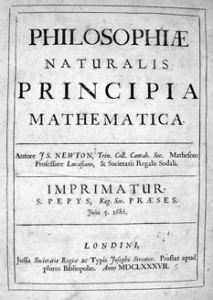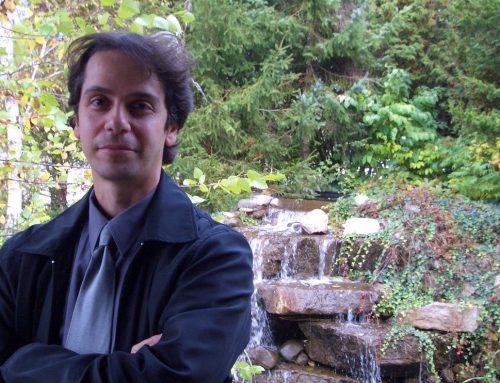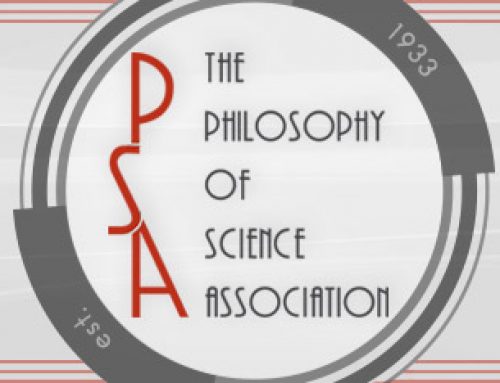By: Greg Horne and Melissa Jacquart
On Friday, March 22nd, Mary Domksi spoke to the Rotman Institute about one of her current research questions: how are we to understand the blending of mathematics and empiricism in Sir Isaac Newton’s Principia Mathematica (1687)? For those unfamiliar with the Principia, it is perhaps one of the most important books in the history of physics and science. In it, Newton gives us his laws of motion that form the foundation of classical mechanics, as well as his law of universal gravitation.

Principia is roughly broken up into three books (Book 1, Book 2, and Book 3) that contain both mathematical and empirical considerations. It is important to think about how Newton went about organizing the material in the Books because it may shed light on how he understood the relationship between mathematics and the empirical world.
Some scholars, such as Steffen Ducheyne, think there are two distinct stages that characterize Newton’s method in Principia. The first is mathematical, which can be seen in Book 1 and Book 2. Ducheyne thinks these books do not pertain to the real forces and motions that exist in nature, but only present an abstract mathematical system. The second stage, present in Book 3, is empirical. Ducheyne thinks this stage is an application of the mathematics from Books 1 and 2 to the real forces and motions that exist in nature based in observation and experiment.
Domski, however, thinks there is a better, alternative understanding of Newton’s methodology – that the Principia is best viewed as being “genuinely empirical from being to end”.
“Books 1 and 2 provide a mathematical treatment of f
orces and motions that establishes, with demonstrative certainty, how bodies must behave in empirically real form of space.
Book 3 illustrates, with inductive certainty, how the bodies that actually exist in nature behave in the empirically real form of space.”
That is to say, according to Domski’s reading, the mathematical is the empirical for Newton.
She substantiates this claim by an argument that focuses on one of Newton’s lesser known works: De Graviatione. She argues that in this work, Newton reveals that his mathematical considerations, which are also reflected in Books 1 and 2 of Principia, are constrained by empirical commitments from the ground up.
An interesting facet of her talk was the contrast she drew between how (she believes) Newton thought about the relationship between mathematics and the world, and how Descartes and Locke thought about this relationship. It is commonly accepted that Descartes and Locke saw a sharp separation between mathematics and its application to nature. Domski argued that it may be inappropriate to attribute these Cartesian and Lockean beliefs to Newton as well. It is this attribution that may partly account for the popular belief that Newton also separated mathematics from nature.
For those interested in learning more about Newton and Principia, be sure to stay tuned for a follow-up post by Craig Fox.
Mary Domski is an Associate Professor of Philosophy at the University of New Mexico. Her research focuses on the interplay of philosophy, mathematics, and science in the early modern period, particularly in the work of Descartes, Newton, and Kant. She says that when time and energy permit, she also thinks about how to integrate the history of philosophy, mathematics, and science into current debates concerning the aims of science.




